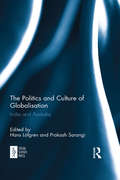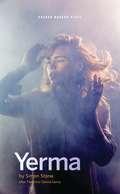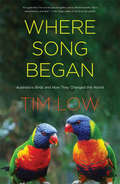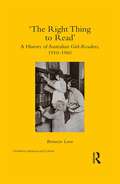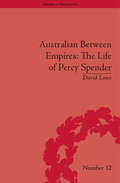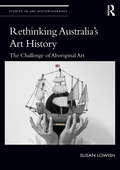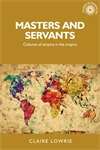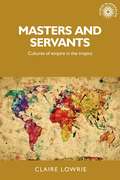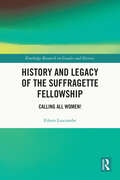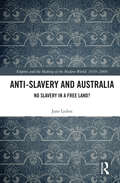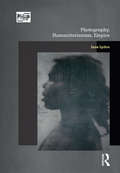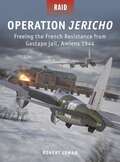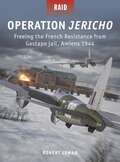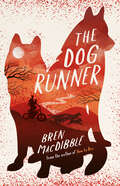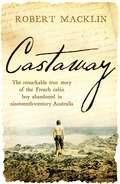- Table View
- List View
The Politics and Culture of Globalisation: India and Australia
by Hans Löfgren Prakash SarangiWe experience the culture of globalisation every time we visit a Tandoori restaurant in Chicago, or a Pizza Hut in Hyderabad, or as we watch Bollywood films in Australia. Globalisation is a label used for a wide range of political, social and cultural phenomena, many of which are explored in this volume. The Politics and Culture of Globalisation: India and Australia brings together Indian and Australian experts in the fields of political science, international relations, philosophy, cultural theory and political economy. Its timeliness and unifying theme derive from comparisons between Indian and Australian perspectives, and analyses by Australian writers on developments in India. Indian-Australian relations are explored in several chapters. The neo-liberal form of globalisation is a key focus of critique in this volume. Several chapters examine the search for alternative forms of governance as the nation-state undergoes profound change due to global interconnectedness.
The Politics and Culture of Globalisation: India and Australia
by Hans Löfgren Prakash SarangiWe experience the culture of globalisation every time we visit a Tandoori restaurant in Chicago, or a Pizza Hut in Hyderabad, or as we watch Bollywood films in Australia. Globalisation is a label used for a wide range of political, social and cultural phenomena, many of which are explored in this volume. The Politics and Culture of Globalisation: India and Australia brings together Indian and Australian experts in the fields of political science, international relations, philosophy, cultural theory and political economy. Its timeliness and unifying theme derive from comparisons between Indian and Australian perspectives, and analyses by Australian writers on developments in India. Indian-Australian relations are explored in several chapters. The neo-liberal form of globalisation is a key focus of critique in this volume. Several chapters examine the search for alternative forms of governance as the nation-state undergoes profound change due to global interconnectedness.
The Cruise of the Snark
by Jack LondonThe Cruise of the Snark (1911) is a memoir of Jack and Charmian London''s 1907-1909 voyage across the Pacific. His descriptions of surf-riding, which he dubbed a royal sport, helped introduce it to and popularize it with the mainland. London writes: Through the white crest of a breaker suddenly appears a dark figure, erect, a man-fish or a sea-god, on the very forward face of the crest where the top falls over and down, driving in toward shore, buried to his loins in smoking spray, caught up by the sea and flung landward, bodily, a quarter of a mile. It is a Kanaka on a surf-board. And I know that when I have finished these lines I shall be out in that riot of colour and pounding surf, trying to bit those breakers even as he, and failing as he never failed, but living life as the best of us may live it. . from Wikipedia, The Free Encyclopedia. Intuitive navigation. . Text annotation and mark-up. .
Yerma (Oberon Modern Plays)
by Federico García Lorca Simon Stone"Well we’ve got three floors right. Plenty of room… Room for a children’s bedroom. Room for two."London, the present day. A woman is driven to the unthinkable by her desperate desire to have a child.Written and directed by Simon Stone, this radical new version of Lorca’s tragedy of yearning and loss won universal critical acclaim when it premiered at the Young Vic in July 2016. Yerma triumphed at the 2017 Olivier Awards, with the production winning Best Revival, and Piper winning Best Actress. She also won the Evening Standard Natasha Richardson Award for Best Actress. Maureen Beattie, Brendan Cowell, John MacMillan and Charlotte Randle received unanimous praise for their performances.
Where Song Began: Australia's Birds and How They Changed the World
by Tim LowAn authoritative and entertaining exploration of Australia’s distinctive birds and their unheralded role in global evolution Renowned for its gallery of unusual mammals, Australia is also a land of extraordinary birds. But unlike the mammals, the birds of Australia flew beyond the continent’s boundaries and around the globe many millions of years ago. This eye-opening book tells the dynamic but little-known story of how Australia provided the world with songbirds and parrots, among other bird groups, why Australian birds wield surprising ecological power, how Australia became a major evolutionary center, and why scientific biases have hindered recognition of these discoveries. From violent, swooping magpies to tool-making cockatoos, Australia’s birds are strikingly different from birds of other lands—often more intelligent and aggressive, often larger and longer-lived. Tim Low, a renowned biologist with a rare storytelling gift, here presents the amazing evolutionary history of Australia’s birds. The story of the birds, it turns out, is inseparable from the story of the continent itself and also the people who inhabit it.
‘The Right Thing to Read’: A History of Australian Girl-Readers, 1910-1960
by Bronwyn Lowe‘The Right Thing to Read’: A History of Australian Girl-Readers, 1910-1960 explores the reading habits, identity, and construction of femininity of Australian girls aged between ten and fourteen from 1910 to 1960. It investigates changing notions of Australian girlhood across the period, and explores the ways that parents, teachers, educators, journalists and politicians attempted to mitigate concerns about girls’ development through the promotion of ‘healthy’ literature. The book also addresses the influence of British publishers to Australian girl-readers and the growing importance of Australian publishers throughout the period. It considers the rise of Australian literary nationalism in the global context, and the increasing prominence of Australian literature in the period after the Second World War. It also shows how access to reading material improved for girls over the first half of the last century.
‘The Right Thing to Read’: A History of Australian Girl-Readers, 1910-1960
by Bronwyn Lowe‘The Right Thing to Read’: A History of Australian Girl-Readers, 1910-1960 explores the reading habits, identity, and construction of femininity of Australian girls aged between ten and fourteen from 1910 to 1960. It investigates changing notions of Australian girlhood across the period, and explores the ways that parents, teachers, educators, journalists and politicians attempted to mitigate concerns about girls’ development through the promotion of ‘healthy’ literature. The book also addresses the influence of British publishers to Australian girl-readers and the growing importance of Australian publishers throughout the period. It considers the rise of Australian literary nationalism in the global context, and the increasing prominence of Australian literature in the period after the Second World War. It also shows how access to reading material improved for girls over the first half of the last century.
Australian Between Empires: The Life Of Percy Spender (Empires in Perspective #12)
by David LowePart biography, part transnational history, this study details the life and career of Percy Spender, one of Australia's most prominent twentieth-century political figures.
Australian Between Empires: The Life of Percy Spender (Empires in Perspective)
by David LowePart biography, part transnational history, this study details the life and career of Percy Spender, one of Australia's most prominent twentieth-century political figures.
Rethinking Australia’s Art History: The Challenge of Aboriginal Art (Studies in Art Historiography)
by Susan LowishThis book aims to redefine Australia’s earliest art history by chronicling for the first time the birth of the category "Aboriginal art," tracing the term’s use through published literature in the late eighteenth, nineteenth and early twentieth centuries. Susan Lowish reveals how the idea of "Aboriginal art" developed in the European imagination, manifested in early literature, and became a distinct classification with its own criteria and form. Part of the larger story of Aboriginal/European engagement, this book provides a new vision for an Australian art history reconciled with its colonial origins and in recognition of what came before the contemporary phenomena of Aboriginal art.
Rethinking Australia’s Art History: The Challenge of Aboriginal Art (Studies in Art Historiography)
by Susan LowishThis book aims to redefine Australia’s earliest art history by chronicling for the first time the birth of the category "Aboriginal art," tracing the term’s use through published literature in the late eighteenth, nineteenth and early twentieth centuries. Susan Lowish reveals how the idea of "Aboriginal art" developed in the European imagination, manifested in early literature, and became a distinct classification with its own criteria and form. Part of the larger story of Aboriginal/European engagement, this book provides a new vision for an Australian art history reconciled with its colonial origins and in recognition of what came before the contemporary phenomena of Aboriginal art.
Masters and servants: Cultures of empire in the tropics (PDF) (Studies in Imperialism)
by Claire LowrieMasters and servants explores the politics of colonial mastery and domestic servitude in the neighbouring British colonies of Singapore and Darwin. Through an exploration of master-servant relationships within British, white Australian and Chinese homes, this book illustrates the centrality of the domestic realm to the colonial project. It is the first comparative history of domestic service and British colonialism in the tropics, and highlights the important role which 'houseboys' played in colonial households in the tropics and the common preference for Chinese 'houseboys' throughout Southeast Asia. The book is meticulously researched, and draws from archives that have never been addressed in this way before. Its highly original and innovative approach, which combines comparative analysis with a focus on transcolonial connections, puts the book at the forefront of current postcolonial scholarship. The insights that Masters and servants provides into the domestic politics of colonial rule make this book essential reading for students and scholars of empire.
Masters and servants: Cultures of empire in the tropics (Studies in Imperialism)
by Claire LowrieMasters and servants explores the politics of colonial mastery and domestic servitude in the neighbouring British colonies of Singapore and Darwin. Through an exploration of master-servant relationships within British, white Australian and Chinese homes, this book illustrates the centrality of the domestic realm to the colonial project. It is the first comparative history of domestic service and British colonialism in the tropics, and highlights the important role which 'houseboys' played in colonial households in the tropics and the common preference for Chinese 'houseboys' throughout Southeast Asia. The book is meticulously researched, and draws from archives that have never been addressed in this way before. Its highly original and innovative approach, which combines comparative analysis with a focus on transcolonial connections, puts the book at the forefront of current postcolonial scholarship. The insights that Masters and servants provides into the domestic politics of colonial rule make this book essential reading for students and scholars of empire.
History and Legacy of the Suffragette Fellowship: Calling all Women! (Routledge Research in Gender and History)
by Eileen LuscombeHistory and Legacy of the Suffragette Fellowship provides a biographical account of the scope and depth of the memory work of the now-forgotten commemorative group the Suffragette Fellowship, active from the 1920s to the 1970s. The Suffragette Fellowship comprised members from the militant suffrage groups known as the Women’s Social and Political Union, the Women’s Freedom League, and the Actress Franchise League. This research provides a comprehensive analysis of the Fellowship’s attempts to form and sustain a collective Suffragette identity across four decades of activity. It considers the legacy of contested histories attached to militant campaigning that pressured Fellowship leaders to take control of the public memory of suffrage history. With close attention given to a neglected piece of feminist history, this book highlights the cultural and political impacts that the Fellowship enacted in their memory of the women’s suffrage movement. Richly illustrated with images of members, artefacts, and publications, this extensive study of the Suffragette Fellowship adds to transnational suffrage histories in the United Kingdom and Australia and will be of interest to scholars in memory studies and women’s history.
History and Legacy of the Suffragette Fellowship: Calling all Women! (Routledge Research in Gender and History)
by Eileen LuscombeHistory and Legacy of the Suffragette Fellowship provides a biographical account of the scope and depth of the memory work of the now-forgotten commemorative group the Suffragette Fellowship, active from the 1920s to the 1970s. The Suffragette Fellowship comprised members from the militant suffrage groups known as the Women’s Social and Political Union, the Women’s Freedom League, and the Actress Franchise League. This research provides a comprehensive analysis of the Fellowship’s attempts to form and sustain a collective Suffragette identity across four decades of activity. It considers the legacy of contested histories attached to militant campaigning that pressured Fellowship leaders to take control of the public memory of suffrage history. With close attention given to a neglected piece of feminist history, this book highlights the cultural and political impacts that the Fellowship enacted in their memory of the women’s suffrage movement. Richly illustrated with images of members, artefacts, and publications, this extensive study of the Suffragette Fellowship adds to transnational suffrage histories in the United Kingdom and Australia and will be of interest to scholars in memory studies and women’s history.
Anti-Slavery and Australia: No Slavery in a Free Land? (Empire and the Making of the Modern World, 1650-2000)
by Jane LydonBringing the histories of British anti-slavery and Australian colonization together changes our view of both. This book explores the anti-slavery movement in imperial scope, arguing that colonization in Australasia facilitated emancipation in the Caribbean, even as abolition powerfully shaped the Settler Revolution. The anti-slavery campaign was deeply entwined with the administration of the empire and its diverse peoples, as well as the radical changes demanded by industrialization and rapid social change in Britain. Abolition posed problems to which colonial expansion provided the answer, intimately linking the end of slavery to systematic colonization and Indigenous dispossession. By defining slavery in the Caribbean as the opposite of freedom, a lasting impact of abolition was to relegate other forms of oppression to lesser status, or to deny them. Through the shared concerns of abolitionists, slave-owners, and colonizers, a plastic ideology of ‘free labour’ was embedded within post-emancipation imperialist geopolitics, justifying the proliferation of new forms of unfree labour and defining new racial categories. The celebration of abolition has overshadowed post-emancipation continuities and transformations of slavery that continue to shape the modern world.
Anti-Slavery and Australia: No Slavery in a Free Land? (Empire and the Making of the Modern World, 1650-2000)
by Jane LydonBringing the histories of British anti-slavery and Australian colonization together changes our view of both. This book explores the anti-slavery movement in imperial scope, arguing that colonization in Australasia facilitated emancipation in the Caribbean, even as abolition powerfully shaped the Settler Revolution. The anti-slavery campaign was deeply entwined with the administration of the empire and its diverse peoples, as well as the radical changes demanded by industrialization and rapid social change in Britain. Abolition posed problems to which colonial expansion provided the answer, intimately linking the end of slavery to systematic colonization and Indigenous dispossession. By defining slavery in the Caribbean as the opposite of freedom, a lasting impact of abolition was to relegate other forms of oppression to lesser status, or to deny them. Through the shared concerns of abolitionists, slave-owners, and colonizers, a plastic ideology of ‘free labour’ was embedded within post-emancipation imperialist geopolitics, justifying the proliferation of new forms of unfree labour and defining new racial categories. The celebration of abolition has overshadowed post-emancipation continuities and transformations of slavery that continue to shape the modern world.
Photography, Humanitarianism, Empire (Photography, History: History, Photography)
by Jane LydonWith their power to create a sense of proximity and empathy, photographs have long been a crucial means of exchanging ideas between people across the globe; this book explores the role of photography in shaping ideas about race and difference from the 1840s to the 1948 Declaration of Human Rights. Focusing on Australian experience in a global context, a rich selection of case studies – drawing on a range of visual genres, from portraiture to ethnographic to scientific photographs – show how photographic encounters between Aboriginals, missionaries, scientists, photographers and writers fuelled international debates about morality, law, politics and human rights.Drawing on new archival research, Photography, Humanitarianism, Empire is essential reading for students and scholars of race, visuality and the histories of empire and human rights.
Photography, Humanitarianism, Empire (Photography, History: History, Photography)
by Jane LydonWith their power to create a sense of proximity and empathy, photographs have long been a crucial means of exchanging ideas between people across the globe; this book explores the role of photography in shaping ideas about race and difference from the 1840s to the 1948 Declaration of Human Rights. Focusing on Australian experience in a global context, a rich selection of case studies – drawing on a range of visual genres, from portraiture to ethnographic to scientific photographs – show how photographic encounters between Aboriginals, missionaries, scientists, photographers and writers fuelled international debates about morality, law, politics and human rights.Drawing on new archival research, Photography, Humanitarianism, Empire is essential reading for students and scholars of race, visuality and the histories of empire and human rights.
Operation Jericho: Freeing the French Resistance from Gestapo jail, Amiens 1944 (Raid)
by Robert LymanThis is the story of Operation Jericho, the spectacular prison break staged by an elite group of British, Australian and New Zealand bomber pilots, who flew a daring low-level mission to blow holes in the walls of Amiens jail and free French Resistance prisoners under the sentence of death during World War II.With D-Day looming, early 1944 was a time of massive intelligence activity across northern France, and many résistants were being captured and imprisoned by the Germans. Among the jails full of French agents was Amiens, where hundreds awaited likely execution for their activities.To repay their debt of honour, MI6 requested an air raid with a seemingly impossible brief: to simultaneously blow holes in the prison walls, free as many men and women as possible while minimizing casualties, and kill German guards in their quarters. The crews would have to fly their bomb-run at an altitude of just 20ft. Despite the huge difficulties, the RAF decided that the low-level specialists of No. 140 Wing had a chance of success. With the aid of first-hand accounts, explanatory 3D diagrams and dramatic original artwork, the eminent historian Robert Lyman explains how one of the most difficult and spectacular air raids of World War II was pulled off, and debunks some of the myths over why the raid was ordered in the first place.
Operation Jericho: Freeing the French Resistance from Gestapo jail, Amiens 1944 (Raid)
by Robert LymanThis is the story of Operation Jericho, the spectacular prison break staged by an elite group of British, Australian and New Zealand bomber pilots, who flew a daring low-level mission to blow holes in the walls of Amiens jail and free French Resistance prisoners under the sentence of death during World War II.With D-Day looming, early 1944 was a time of massive intelligence activity across northern France, and many résistants were being captured and imprisoned by the Germans. Among the jails full of French agents was Amiens, where hundreds awaited likely execution for their activities.To repay their debt of honour, MI6 requested an air raid with a seemingly impossible brief: to simultaneously blow holes in the prison walls, free as many men and women as possible while minimizing casualties, and kill German guards in their quarters. The crews would have to fly their bomb-run at an altitude of just 20ft. Despite the huge difficulties, the RAF decided that the low-level specialists of No. 140 Wing had a chance of success. With the aid of first-hand accounts, explanatory 3D diagrams and dramatic original artwork, the eminent historian Robert Lyman explains how one of the most difficult and spectacular air raids of World War II was pulled off, and debunks some of the myths over why the raid was ordered in the first place.
The Dog Runner
by Bren MacDibbleElla and her brother, Emery, are alone in a city that's starving to death. If they are going to survive, they must get away, up-country, to find Emery's mum. But how can two kids travel such big distances across a dry, barren and dangerous landscape? Well, when you've got five big doggos and a dry-land dogsled, the answer is you go mushing. But when Emery is injured, Ella must find a way to navigate them through rough terrain, and even rougher encounters with desperate people. From the author of 'How to Bee', an intense and thrilling adventure with an important environmental message, set in an all-too-possible dystopian future Australia.
The Dog Runner
by Bren MacDibbleElla and her brother, Emery, are alone in a city that's starving to death. If they are going to survive, they must get away, up-country, to find Emery's mum. But how can two kids travel such big distances across a dry, barren and dangerous landscape? Well, when you've got five big doggos and a dry-land dogsled, the answer is you go mushing. But when Emery is injured, Ella must find a way to navigate them through rough terrain, and even rougher encounters with desperate people. From the author of 'How to Bee', an intense and thrilling adventure with an important environmental message, set in an all-too-possible dystopian future Australia.
Castaway: The remarkable true story of the French cabin boy abandoned in nineteenth-century Australia
by Robert Macklin'A truly remarkable account drawing upon a version Pelletier gave when he eventually returned to his native France and also on anthropological studies of the Daintree people.' Piers Akerman, Daily Telegraph, Sydney 'An unforgettable tale of transformation and upheaval.'Stuart McLean, Daily Telegraph, SydneyA young boy abandoned in an alien landscape thousands of miles from home is adopted by local people and becomes one of them, welcomed into their community, marrying a wife and raising a child. After seventeen years, he is stolen back to his 'real' life, where he has another family, but dreams constantly of what he has left behind.This is the remarkable true story of a French cabin boy Narcisse Pelletier who, after disembarking from his ship the Saint-Paul with the rest of its crew in search of drinking water, found himself separated from his shipmates and in the end abandoned on the north coast of Queensland, Australia. Narcisse was adopted by an Aboriginal group who welcomed him as one of their own for seventeen years, during which time he had a family of his own. In 1875, though, he was kidnapped by the brig John Bell and was returned eventually to his family in Saint-Gilles, France, where he became a lighthouse keeper. Robert Macklin makes skilful use of Narcisse's own memoir Chez les sauvages along with new research to tell this extraordinary story.Robert is a Queenslander so knows the terrain and the people of the area in which Narcisse was left behind. Through Noel Pearson's Cape York Institute, he has arranged to meet descendants of the people who took the French cabin boy in and who know the stories of his time in Australia. Robert has also had access to a great deal of material on the early history of the Cape through the Australian National Library. He has drawn on the significant resources of the Australian Institute of Aboriginal and Torres Strait Islander Studies (AIATSIS) in Canberra on Aboriginal culture and history in Queensland and the Cape. In addition, he has made use of Narcisse Pelletier's own writings, including his account of his time in Australia, as well as several contemporaneous accounts of the Kennedy expedition to the area, including one from a member of the party. The author has made several trips to Cape York and one to Saint-Gilles and Saint-Nazaire in France.
